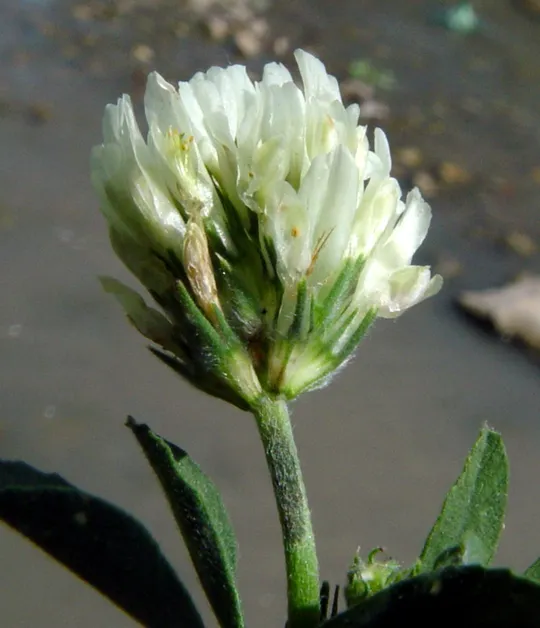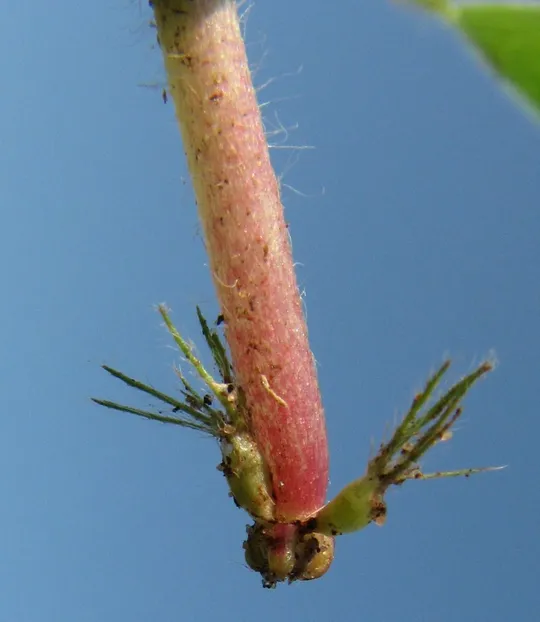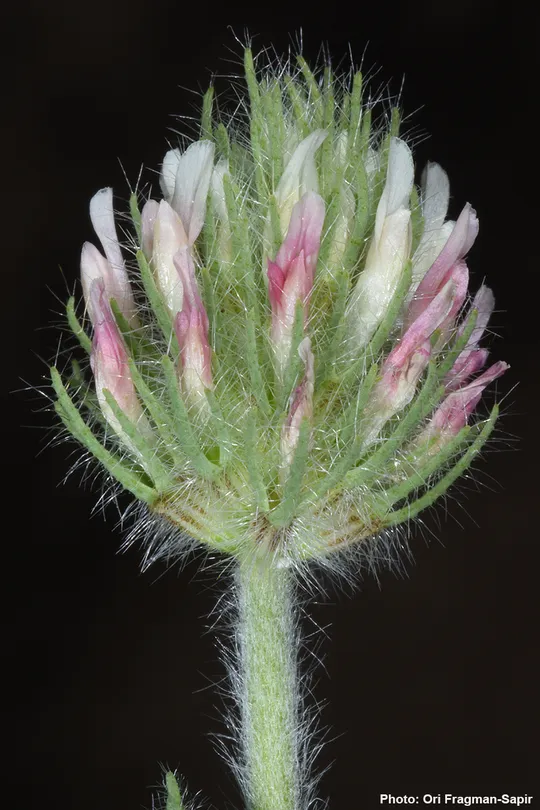Labillardiere's Clover
Trifolium billardierei
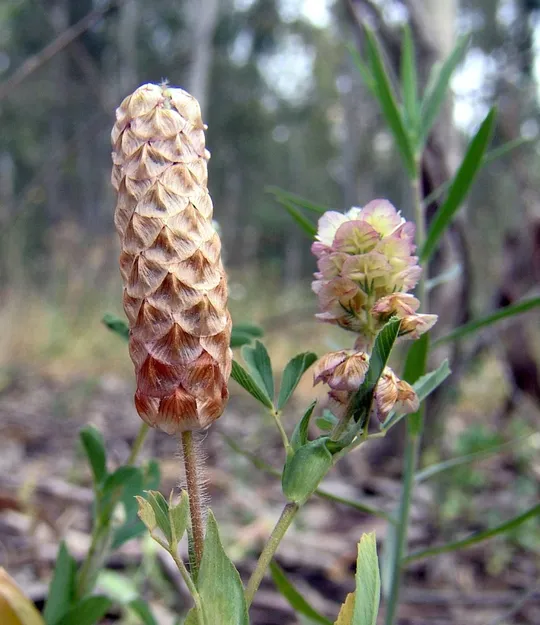
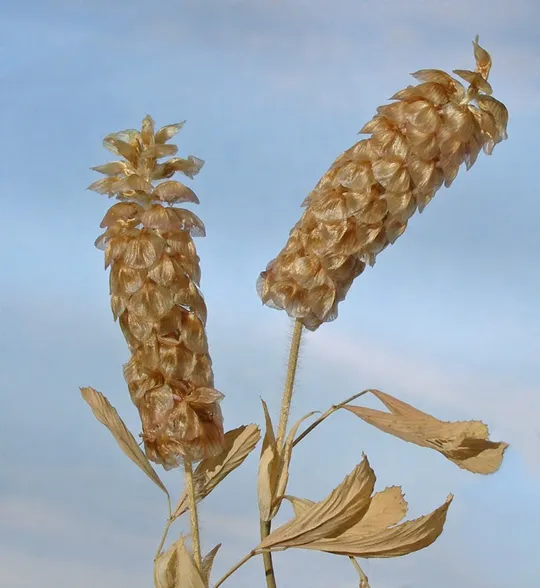
Trifolium
billardieri grows in the Sharon and Pleshet, on seven sites,
although it’s possible that there may be a total of ten sites. In the Sharon
four sites are known today: Hod HaSharon on the margins of Route 4 (Shir Vered,
1993), where it has not been seen; in the IMI compound near Ramat HaSharon (Frumkin, 2007), at Ramat HaKovesh (Or, 2008) and in the
Netanya Forest (Sergeants Grove) (Frumkin, 2008). Further observations in the
Sharon (Shir Vered) from the Morasha interchange and the Ilanot Forest are
uncertain because it is difficult to distinguish between the T.
billardieri and the
similar T. philistaeum when they are in bloom. Four sites were recorded
in the Sharon from the beginning of the 20th century up to 1950 (Pardes Hanna,
Pardesiya, En Hay, Herzliya), but the plant has not been found there since. In Pleshet
there are some observations from 2008 at three sites: Netiv HaAsara, Carmia and
Zikim (Oz Golan). The plant is extinct from an additional site in northern Pleshet
(Bir Salim in the herbarium sheet, near Netser Sereni), from where it was
collected in 1922 by Dinsmore.
Red loam
(Hamra), sandy red loam and sienna sand in sunny areas where annual species dominate.
Trifolium billardieri
belongs to the T.
campestre
group (Sec. Chronosemium) in which the withered corolla serves as a standard,
and helps disperse the seeds in the wind. This species is very close to T. philistaeum which was
described by Michael Zohary. It too is a sub-endemic species, which
deviates beyond Israel to northern Sinai. The distribution of both these
species is limited to the coastal plain and both are an indication of the
accelerated evolution of annual plants on the coastal plain. Both species are
similar and it is difficult to tell them apart in the field: the inflorescence
of T. philistaeum is
more spherical and that of T.
billardieri is elongated and narrow. At the fruit stage it is
easier to tell them apart. T. billardieri has broad rhomboidal leaflets, while T.
philistaeum has narrow
elongated leaflets. Both species have flowers that change colors over time –
the young flowers are whitish while the mature flowers, droop slightly, and
their color turns pink. It is believed
that the drooping flowers increase the attractiveness of the inflorescence, and
its double color also adds helps attract pollinating insects.
This section of
the genus Trifolium
in Israel includes T. erubescens, T. echinatum, T. boissieri and T.
campestre, which is the most common species among them in Israel. All the species in the group do not shed the
corolla, but instead, as the corolla dries it droops downwards and helps disperse
the dry fertile inflorescence.
·
Trifolium
billardieri grows on a few sites, in only two regions, but has become
extinct from some of the sites on which it previously grew. However, there are
new sites that have been discovered only in recent years. This does not
necessarily indicate that there has been an increase in the number of sites,
but rather it reflects a more thorough sampling effort.
·
T. billardieri
often grows in small populations of dozens of plants, in small areas of only a
few square meters.
·
The T. billardieri
sites are found in the densely populated areas of Israel, in which most of the
red loam and sandy red loam habitats have largely disappeared, and the
remaining ones are expected to deteriorate further. The small population size increases
the threat of local extinctions.
·
T. billardieri
is not protected in nature reserves.
·
T. billardieri
is a sub-endemic plant whose local threat level is equivalent to its global threat.
It may already be extinct in Lebanon.
Trifolium
billardieri seeds should be collected to create breeding nuclei in
botanical gardens and other places (as has already been done in the gene bank)
and establish new populations in nature reserves on the coastal plain.
Trifolium billardieri is
a sub-endemic species whose distribution is restricted only to the coasts of Israeli
and southern Lebanon. In the monograph on the Trifolium genus (Zohary
and Heller, 1984), T.
billardieri is noted from only a single site in Lebanon – sandy
areas in the region of Beirut. This is where the naturalist and geologist
Blanche collected the species and first identified and described it.
Trifolium
billardieri is an extremely
rare annual plant of (Hamra) red loam and sandy red loam in the Sharon and Pleshet.
It is endemic to Israel and Lebanon, but it may be extinct from Lebanon. It is
endangered due to its rarity and the vulnerability of its habitat. It is an
endemic species and thus of great importance to conservation.
שמידע, 1982. הצמחים האנדמיים של ישראל. רתם 3: 3-47.
Auerbach M, Shmida A (1985) Harmony among endemic littoral plants and adjacent floras in Israel. Journal of Biogeography, 12.
Zohary, M. and D. Heller. 1984. The Genus Trifolium. The Israel Academy of Sciences and Humanities. Jerusalem.
Current Occupancy Map
| 1000 squre meter pixel | 5000 squre meter pixel | 10000 squre meter pixel | |
|---|---|---|---|
| number of observations | 0 | 0 | 0 |
| in total pixels | 0 | 0 | 0 |
| Family | Fabaceae |
| Classification | On the endangered species list |
| Ecosystem | Coastal area |
| Chorotype | Eastern Mediterranean |
| Conservation Site | IMI Site near Ramat HaSharon |
| Rarity |
1
3
6
|
|---|---|
| Vulnerability |
0
3
4
|
| Attractiveness |
0
0
4
|
| Endemism |
0
2
4
|
| Red number |
1
4.2
10
|
| Peripherality | 0 |
| IUCN category | DD EW EX LC CR EN VU NT |
| Threat Definition according to the red book | Endangered |
 Based on:
Based on:
